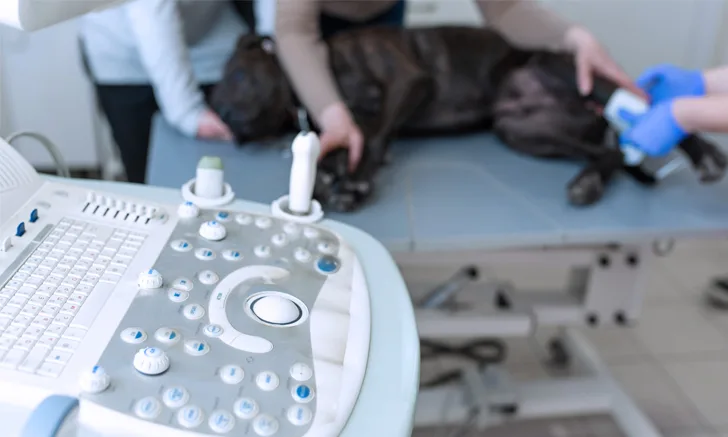Imaging Techniques to Detect Migrating Foreign Bodies
Sara A. Colopy, DVM, PhD, DACVS, University of Wisconsin–Madison

In the Literature
Blondel M, Sonet J, Cachon T, Ségard-Weisse E, Ferrand FX, Carozzo C. Comparison of imaging techniques to detect migrating foreign bodies. Relevance of preoperative and intraoperative ultrasonography for diagnosis and surgical removal. Vet Surg. 2021;50(4):833-842.
The Research …
Plant awns and other foreign bodies are common causes of draining tracts in dogs and cats. Recommended treatment involves removing the foreign body, debriding infected tissue, and administering appropriate antibiotic therapy; however, foreign bodies can be challenging to find during surgery.
Preoperative radiography, ultrasonography, scintigraphy, CT, and MRI have been used to localize foreign bodies with varying success rates.1-5 Reported sensitivity rates for each modality are inconsistent but are generally low for identifying foreign body location. Surgeons often must rely on removing abnormal tissue en bloc, anticipating the foreign body is in resected tissue.
Recent evidence suggests intraoperative ultrasonography increases successful retrieval of plant material from the iliopsoas muscle.6 Removing the foreign body (vs removing infected tissue en bloc) can eliminate the need for a more aggressive procedure.7,8
This study sought to determine whether preoperative ultrasonography was more sensitive than either preoperative CT or MRI for locating a foreign body and whether surgical removal was more successful with intraoperative ultrasonography compared with relying on preoperative imaging alone.
Study results demonstrated that preoperative ultrasonography was more sensitive than CT or MRI for detecting migrating foreign bodies, and intraoperative ultrasonography resulted in higher success rates of foreign body removal. Overall resolution of clinical signs was 90.2%, with no difference between dogs that did and did not undergo intraoperative ultrasonography. A greater number of cases may be needed to determine whether intraoperative ultrasonography improves recovery.
Results indicated that ultrasonography is useful for localizing and removing migrating foreign bodies but depends on operator experience. A multimodal approach to imaging (combining CT or MRI with ultrasonography) may increase overall treatment success.
… The Takeaways
Key pearls to put into practice:
Foreign bodies are common causes of draining tracts in small animals. Localizing a foreign body before and during surgery can be challenging.
Ultrasonography performed by an experienced operator may be more sensitive than CT or MRI for localizing foreign bodies.
Intraoperative ultrasonography can increase localization rates and removal of foreign bodies, but additional studies are needed to determine whether intraoperative ultrasonography improves clinical resolution of signs.
You are reading 2-Minute Takeaways, a research summary resource presented by Clinician’s Brief. Clinician’s Brief does not conduct primary research.